
Wine Culture and Information since 2002 - Volume 23
 Wine Culture and Information since 2002 - Volume 23 |
|
Contrasts of Ortrugo dei Colli Piacentini and Sannio Coda di VolpeDifferent grapes and territories for two equally different wines, a comparison between lightness and structure, in both cases characterized by pleasing elegance. |
|
Emilia-Romagna and Campania are two very different regions in every regard, including winemaking. In both, are grown many grapes, a viticultural characteristic that sees, in general terms, a greater predilection for native varieties. The main wine productions of Emilia-Romagna and Campania are in fact represented by wines produced with native grapes, although in both international varieties are grown and are sometimes also admitted for the production of wines with Denomination of Origin, no less, even monovarietal, as in the case of Emilia-Romagna. The vocation of these two regions, like all those of Italy, is however mainly and predominantly for native varieties, exactly like the two wines that we are examining for the tasting by contrast of this month: Ortrugo dei Colli Piacentini for Emilia-Romagna and Sannio Coda di Volpe for Campania. This month we are going to pour in our glasses two wines that, in many ways, can be considered typical and representative of their respective territories. Ortrugo is undeniably among the most significant white grapes of the Colli Piacentini Denomination of Controlled Origin and certainly the most consumed white wine in the area. Coda di Volpe – although it is widespread throughout Campania – is enjoying considerable success in the Sannio DOC area, together with other white grape varieties typical of the region. The wines in our tasting by contrast are decidedly different from each other. Ortrugo in fact makes wines with a light body and a prominent acidity, while Coda di Volpe is appreciated for wines with a decidedly greater structure than the Piacenza wine, together with a pleasing acidity – however less intense than that of Ortrugo – which finds greater balance thanks also to the effect of alcohol. We will therefore have in our glasses two expressions of white wines that are very distinct and different from each other.
|
|
The Denomination of Controlled Origin Colli Piacentini is mainly identified with Gutturnio for red wines, Ortrugo and Malvasia di Candia for whites. A native variety of the Piacenza area, Ortrugo seriously risked disappearing from the vineyards of these lands and only a recovery and enhancement process – during the 1980s – averted its extinction. The recovery of Ortrugo was thanks to the University of Piacenza, which, with a specific research study, highlighted the enological qualities of this variety. It must be said, in fact, that Ortrugo was used in the past as a blending grape, added as a corrective to the wines of the area, therefore not used alone for the production of wine. Even the name by which this variety was known in the Piacenza area would testify to its primary intended use. In the local dialect, in fact, this variety was known as altruga, a dialect term meaning “other grape”. Documents from the early 1800s, where this variety is mentioned for the first time and with the dialectal definition, suggest that its primary destination was to make blending wines, therefore added to other wines. It must be said, in fact, that wines produced with Ortrugo are appreciated for their strong acidity, therefore suitable for correcting excessively flat or round wines. This grape is mentioned with its current name Ortrugo in 1927, when Professor Toni uses this name instead of the dialectal term, underlining – not least – that it was included among the main vines of the area. Ortrugo experienced a period of oblivion in the 1960s, so much so that it risked disappearing from the vineyards of the Colli Piacentini and, as mentioned, in the 1980s, thanks to the University of Piacenza, this grape was revalued until it became one of the most widespread and appreciated white grape varieties of the area today. Thanks to its characteristics, wines made from Ortrugo grapes are appreciated for their decisive crispness combined with a pleasing lightness, so much so that they are also suitable for the production of sparkling wines, styles which – today – are those mainly produced with this grape.
|
||||
|
Coda di Volpe is one of the many native grapes of Campania and certainly among the oldest known. Widespread throughout the region, it takes its name from the shape of the bunch which resembles, in fact, the curvature of a fox's tail (Coda di Volpe means “fox tail” in Italian). The first written mention is due to Pliny the Elder in his monumental Naturalis Historia, who lists it among the varieties suitable for cultivation with the pergola method. Just like Ortrugo, Coda di Volpe was also used in the past as a complementary grape combined with other varieties, therefore, as a blending grape. It was only in the 1990s that the winemaking history of Coda di Volpe changed and decidedly for the better. It was in fact in this period that the possibility of creating monovarietal wines with Coda di Volpe began to be studied, experimenting – not least – with different winemaking techniques, including fermentation and aging in cask. A change that, it should be noted, originated in the territory of Sannio, in the province of Benevento, and which was then taken up in other territories of Campania. Although Coda di Volpe is present throughout the region, particularly in the Vesuvius area and in Irpinia, Sannio and Taburno are today considered the main areas in which this grape is capable of expressing its best in enological terms. One of the characteristics that, so to speak, have penalized Coda di Volpe is its acidity which, compared to other white grape varieties, is evidently more modest. A quality that for years has made it considered only as a grape to be added to others, however, when properly grown and harvested, Coda di Volpe is capable of making wines of marked value and interest, a quality now proven by the enological results of recent decades and, in particular, in Sannio. Today, also as a result of the long experience gained in this territory, Coda di Volpe is mainly vinified in inert containers, in particular the steel tank, in order to favor the expression of the aromas of this variety and, not least, appropriately enhancing the acidity.
|
We can start our tasting by contrast and, before pouring the wines into their glasses, we need to find the two bottles. Ortrugo dei Colli Piacentini and Sannio Coda di Volpe, outside their respective production areas, could present some difficulties in finding them, however, it will not be difficult to find them in any good specialized and well-stocked wine shop. As usual, we will make sure that the two wines are produced with their respective varieties only, as both disciplinary allow the use of other and possible grapes. As regards Ortrugo dei Colli Piacentini, we will also have to pay attention to the style and vinification. This wine, in fact, is often produced as a sparkling wine – definitely the most widespread style – while the one we are examining in our tasting must be “still”, therefore not sparkling. In both cases, we will make sure the vinification has been entirely carried out in inert containers, specifically, the steel tank. The two wines are poured into their respective tasting glasses at a temperature of 10 °C (50 °F). We can now start this month's tasting by contrast of Ortrugo dei Colli Piacentini and Sannio Coda di Volpe, first examining the appearance of the Emilian wine. We tilt the glass of Ortrugo dei Colli Piacentini over a white surface – a sheet of paper will do – and observe the base. We see an intense and bright greenish yellow color with a very high transparency. The nuance of the Piacenza wine, placing our attention towards the opening of the glass, confirms the greenish yellow base color. Let's now move on to evaluating the appearance of Sannio Coda di Volpe and, as with the previous wine, we tilt its glass over the white surface. Observing the base, we see an intense straw yellow color with a very high transparency. The nuance of the Campanian wine, observed towards the opening of the glass, confirms the straw yellow base color. The olfactory profiles of wines produced with Ortrugo and Coda di Volpe differ significantly to the nose, including those produced in the Colli Piacentini and Sannio denominations. Ortrugo is appreciated for its aromas that mainly recall apple, pear and apricot, as well as floral aromas characterized by jasmine, acacia and white rose. Wines produced with this grape generally express olfactory sensations, so to speak, not bursting and imposing, with aromas that can be defined as delicate and certainly not fully intense. The intensity of the aromas which is expressed in a decidedly more powerful way is that perceived in wines produced with Coda di Volpe, including those from the Sannio area. From the glass can be mainly perceived aromas of white-fleshed fruits, such as apple and pear, as well as yellow and exotic fruits, such as peach and pineapple. In these wines are also perceptible aromas directly associated with the world of flowers, in particular hawthorn, broom and chamomile. Let's resume our tasting by contrast and proceed with the evaluation of the olfactory profiles of Ortrugo dei Colli Piacentini and Sannio Coda di Volpe, starting – as in the previous phase – with the Emilian wine. By keeping the glass in a vertical position and without swirling, we proceed with the first smell in order to appreciate the opening of the wine, that is, the evaluation of the primary aromas. From the glass we can perceive, with a gentle intensity, aromas of apple, pear and apricot followed by floral recognitions of broom, acacia and, often, white rose and jasmine. After swirling the glass and proceeding with the second smell, the olfactory profile of Ortrugo dei Colli Piacentini is completed with plum, peach and grapefruit. Let's now move on to the evaluation of the opening of Sannio Coda di Volpe, therefore by keeping the glass in a vertical position and without swirling, we proceed with the evaluation of its opening. From the glass we appreciate aromas of greater intensity than the previous wine and in which we recognize apple, pear and peach, as well as aromas of hawthorn and broom. After swirling the glass and doing the second smell, the olfactory profile is completed with pineapple, medlar and plum, often followed by aromas recalling citrus fruits and hazelnut. Let's now move on to the evaluation of the gustatory profiles of our wines, starting, as in the previous phases, with Ortrugo dei Colli Piacentini. Let's take a sip of this wine in order to evaluate its attack, that is, the primary sensations perceived in the mouth. Among the first gustatory qualities to be recognized, the crispness conferred by the acidity and a decidedly modest structure stand out, both determining factors in giving Ortrugo dei Colli Piacentini a pleasing and immediate character. The effect of alcohol, although perceptible, still leaves the acidity in good evidence in the overall balance and in the mouth the flavors of apple, pear and apricot are perceived. Let's now move on to the evaluation of the gustatory profile of Sannio Coda di Volpe, so let's take a sip of this wine and focus on its attack. In the mouth, compared to the previous wine, a greater sensation of structure and, at the same time, a lower intensity of acidity are immediately perceived. The balance of the wine is promptly obtained thanks to the effect of alcohol. Finally, in the mouth we perceive the flavors of apple, pear and peach. We conclude this month's tasting by contrast by evaluating the final sensations that the two wines leave in the mouth after swallowing, in particular the taste-olfactory persistence, the primary factor in the quality of a wine. The finish of Ortrugo dei Colli Piacentini is persistent, leaving flavors of apple, pear and apricot in the mouth as well as a marked sensation of crispness given by the acidity. In the mouth, moreover, a sensation of light structure continues to be perceived, giving the wine a pleasing elegance and immediacy. The finish of Sannio Coda di Volpe is equally persistent and in the mouth, the structure continues to be perceived, decidedly more intense than the previous wine, while the acidity is decidedly lower when compared to that of Ortrugo. In the mouth, the flavors of apple, pear and peach continue to be perceived as well as a pleasing note reminiscent of hazelnut. We now proceed to the final smell of the two glasses, first Ortrugo dei Colli Piacentini and then Sannio Coda di Volpe. The olfactory sensations are still distant and, in particular, their intensity, decidedly lighter the one which is perceived from the glass of the Piacenza wine.
|
||||||||
Wines of the Month |
|
|
|
Score legend Prices are to be considered as indicative. Prices may vary according to the country or the shop where wines are bought |
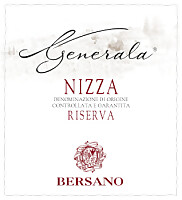
|
|
Nizza Riserva Generala 2017 |
|
| Bersano (Piedmont, Italy) | |
 Barbera Barbera | |
| Price: € 30.50 | Score: |
 Intense ruby red and nuances of garnet red, little transparency. Intense ruby red and nuances of garnet red, little transparency. Intense, clean, pleasing, refined and elegant, starts with hints of
plum, cherry and dried violet followed by aromas of plum, blueberry,
raspberry, cocoa, tobacco, licorice, leather, mace, undergrowth, vanilla
and menthol. Intense, clean, pleasing, refined and elegant, starts with hints of
plum, cherry and dried violet followed by aromas of plum, blueberry,
raspberry, cocoa, tobacco, licorice, leather, mace, undergrowth, vanilla
and menthol.
 Properly tannic attack and however balanced by alcohol, good body,
intense flavors, pleasing crispness. Properly tannic attack and however balanced by alcohol, good body,
intense flavors, pleasing crispness.
 Persistent finish with flavors of plum, cherry and raspberry. Persistent finish with flavors of plum, cherry and raspberry. 12 months in cask, 12 months in bottle. 12 months in cask, 12 months in bottle. |
|
 Broiled meat and barbecue, Roasted meat, Stewed meat with mushrooms, Hard cheese Broiled meat and barbecue, Roasted meat, Stewed meat with mushrooms, Hard cheese |
|

|
|
Barolo Badarina 2015 |
|
| Bersano (Piedmont, Italy) | |
 Nebbiolo Nebbiolo | |
| Price: € 47.50 | Score: |
 Brilliant ruby red and nuances of brick red, moderate transparency. Brilliant ruby red and nuances of brick red, moderate transparency. Intense, clean, pleasing, refined and elegant, starts with hints of
cherry, plum and dried violet followed by aromas of dried rose, raspberry,
strawberry, cocoa, tobacco, licorice, leather, tar, vanilla and menthol. Intense, clean, pleasing, refined and elegant, starts with hints of
cherry, plum and dried violet followed by aromas of dried rose, raspberry,
strawberry, cocoa, tobacco, licorice, leather, tar, vanilla and menthol.
 Properly tannic attack and however balanced by alcohol, full body,
intense flavors, pleasing crispness. Properly tannic attack and however balanced by alcohol, full body,
intense flavors, pleasing crispness.
 Persistent finish with flavors of cherry, plum and raspberry. Persistent finish with flavors of cherry, plum and raspberry. At least 48 months in cask and bottle. At least 48 months in cask and bottle. |
|
 Game, Roasted meat, Braised and stewed meat, Hard cheese Game, Roasted meat, Braised and stewed meat, Hard cheese |
|
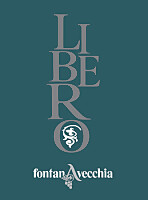
|
|
Falanghina del Sannio Taburno Libero 2019 |
|
| Fontanavecchia (Campania, Italy) | |
 Falanghina Falanghina | |
| Price: € 26.00 | Score: |
 Intense straw yellow and nuances of straw yellow, very transparent. Intense straw yellow and nuances of straw yellow, very transparent. Intense, clean, pleasing, refined and elegant, starts with hints of
apple, plum and pineapple followed by aromas of broom, hawthorn, pear,
peach, citrus fruits, medlar, lemon balm, honey, vanilla and mineral. Intense, clean, pleasing, refined and elegant, starts with hints of
apple, plum and pineapple followed by aromas of broom, hawthorn, pear,
peach, citrus fruits, medlar, lemon balm, honey, vanilla and mineral.
 Crisp attack and however balanced by alcohol, good body, intense
flavors, agreeable. Crisp attack and however balanced by alcohol, good body, intense
flavors, agreeable.
 Very persistent finish with long flavors of apple, plum and pineapple. Very persistent finish with long flavors of apple, plum and pineapple. A small part ferments and ages for 6 months in barrique. A small part ferments and ages for 6 months in barrique. |
|
 Stuffed pasta with mushrooms, Roasted fish, Stewed white meat, Broiled fish, Mushroom soups Stuffed pasta with mushrooms, Roasted fish, Stewed white meat, Broiled fish, Mushroom soups |
|
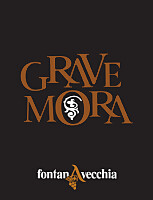
|
|
Aglianico del Taburno Riserva Grave Mora 2017 |
|
| Fontanavecchia (Campania, Italy) | |
 Aglianico Aglianico | |
| Price: € 38.00 | Score: |
 Deep ruby red and nuances of garnet red, little transparency. Deep ruby red and nuances of garnet red, little transparency. Intense, clean, pleasing, refined and elegant, starts with hints of
plum, blackberry and black cherry followed by aromas of dried violet,
blueberry, strawberry, cocoa, tobacco, leather, tar, licorice, mace, pink
pepper, graphite, vanilla and menthol. Intense, clean, pleasing, refined and elegant, starts with hints of
plum, blackberry and black cherry followed by aromas of dried violet,
blueberry, strawberry, cocoa, tobacco, leather, tar, licorice, mace, pink
pepper, graphite, vanilla and menthol.
 Properly tannic attack and however balanced by alcohol, full body,
intense flavors, pleasing crispness. Properly tannic attack and however balanced by alcohol, full body,
intense flavors, pleasing crispness.
 Very persistent finish with long flavors of plum, blackberry and black
cherry. Very persistent finish with long flavors of plum, blackberry and black
cherry.
 18 months in barrique, 12 months in bottle. 18 months in barrique, 12 months in bottle. |
|
 Game, Roasted meat, Stewed and braised meat, Hard cheese Game, Roasted meat, Stewed and braised meat, Hard cheese |
|
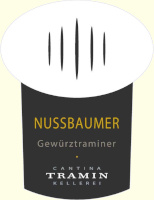
|
|
Alto Adige Gewürztraminer Nussbaumer 2022 |
|
| Cantina Tramin (Alto Adige, Italy) | |
 Gewürztraminer Gewürztraminer | |
| Price: € 29.00 | Score: |
 Intense straw yellow and nuances of golden yellow, very transparent. Intense straw yellow and nuances of golden yellow, very transparent. Intense, clean, pleasing, refined and elegant, starts with hints of
grape, apricot and white rose followed by aromas of acacia, mango, melon,
pear, apple, passion fruit, lychee, pineapple, peach, banana, nutmeg,
saffron, ginger and sage. Intense, clean, pleasing, refined and elegant, starts with hints of
grape, apricot and white rose followed by aromas of acacia, mango, melon,
pear, apple, passion fruit, lychee, pineapple, peach, banana, nutmeg,
saffron, ginger and sage.
 Crisp attack and however balanced by alcohol, good body, intense
flavors, pleasing roundness. Crisp attack and however balanced by alcohol, good body, intense
flavors, pleasing roundness.
 Very persistent finish with long flavors of grape, apricot and mango. Very persistent finish with long flavors of grape, apricot and mango. Aged in steel tanks. At least 3 months in bottle. Aged in steel tanks. At least 3 months in bottle. |
|
 Stuffed pasta with fish and mushrooms, Roasted fish, Roasted white meat, Broiled crustaceans, Hard cheese Stuffed pasta with fish and mushrooms, Roasted fish, Roasted white meat, Broiled crustaceans, Hard cheese |
|
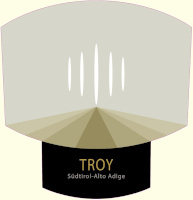
|
|
Alto Adige Chardonnay Riserva Troy 2020 |
|
| Cantina Tramin (Alto Adige, Italy) | |
 Chardonnay Chardonnay | |
| Price: € 80.00 | Score: |
 Brilliant straw yellow and nuances of straw yellow, very transparent. Brilliant straw yellow and nuances of straw yellow, very transparent. Intense, clean, pleasing, refined and elegant, starts with hints of
banana, apple and acacia followed by aromas of chamomile, passion fruit,
pear, peach, citron, grapefruit, pineapple, plum, butter, hazelnut, honey,
praline, vanilla and mineral. Intense, clean, pleasing, refined and elegant, starts with hints of
banana, apple and acacia followed by aromas of chamomile, passion fruit,
pear, peach, citron, grapefruit, pineapple, plum, butter, hazelnut, honey,
praline, vanilla and mineral.
 Crisp attack and however balanced by alcohol, good body, intense
flavors, pleasing roundness. Crisp attack and however balanced by alcohol, good body, intense
flavors, pleasing roundness.
 Very persistent finish with long flavors of banana, apple and passion
fruit. Very persistent finish with long flavors of banana, apple and passion
fruit.
 Fermented in barrique. 11 months in barrique, 22 months in steel tanks,
4 months in bottle. Fermented in barrique. 11 months in barrique, 22 months in steel tanks,
4 months in bottle.
|
|
 Pasta and risotto with fish and crustaceans, Stewed fish, Stewed white meat, Vegetable and mushroom flans, Dairy products Pasta and risotto with fish and crustaceans, Stewed fish, Stewed white meat, Vegetable and mushroom flans, Dairy products |
|
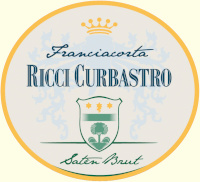
|
|
Franciacorta Satèn Brut 2019 |
|
| Ricci Curbastro (Lombardy, Italy) | |
 Chardonnay Chardonnay | |
| Price: € 30.00 | Score: |
 Pale straw yellow and nuances of straw yellow, very transparent, fine
and persistent perlage. Pale straw yellow and nuances of straw yellow, very transparent, fine
and persistent perlage.
 Intense, clean, pleasing, refined and elegant, starts with hints of
banana, acacia and bread crust followed by aromas of hawthorn, broom,
citron, apple, pineapple, pear, grapefruit, plum, hazelnut, butter,
croissant, praline and hints of vanilla. Intense, clean, pleasing, refined and elegant, starts with hints of
banana, acacia and bread crust followed by aromas of hawthorn, broom,
citron, apple, pineapple, pear, grapefruit, plum, hazelnut, butter,
croissant, praline and hints of vanilla.
 Crisp and effervescent attack, however balanced by alcohol, good body,
intense flavors, agreeable. Crisp and effervescent attack, however balanced by alcohol, good body,
intense flavors, agreeable.
 Persistent finish with flavors of banana, citron and hazelnut. Persistent finish with flavors of banana, citron and hazelnut. Fermented in barrique. Refermented in bottle and aged on its lees
for about 40 months. Fermented in barrique. Refermented in bottle and aged on its lees
for about 40 months.
|
|
 Pasta and risotto with fish and crustaceans, Sauteed white meat, Sauteed crustaceans, Roasted fish Pasta and risotto with fish and crustaceans, Sauteed white meat, Sauteed crustaceans, Roasted fish |
|
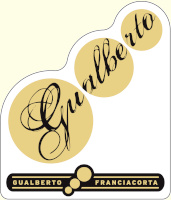
|
|
Franciacorta Dosaggio Zero Gualberto 2014 |
|
| Ricci Curbastro (Lombardy, Italy) | |
 Pinot Nero (65%), Chardonnay (35%) Pinot Nero (65%), Chardonnay (35%) | |
| Price: € 43.00 | Score: |
 Brilliant straw yellow and nuances of straw yellow, very transparent,
fine and persistent perlage. Brilliant straw yellow and nuances of straw yellow, very transparent,
fine and persistent perlage.
 Intense, clean, pleasing, refined and elegant, starts with hints of
apple, banana and bread crust followed by aromas of grapefruit, melo,
tangerine, pear, pineapple, plum, peach, hazelnut, butter, croissant,
praline, beeswax, mineral and hints of vanilla. Intense, clean, pleasing, refined and elegant, starts with hints of
apple, banana and bread crust followed by aromas of grapefruit, melo,
tangerine, pear, pineapple, plum, peach, hazelnut, butter, croissant,
praline, beeswax, mineral and hints of vanilla.
 Effervescent and crisp attack, however balanced by alcohol, good body,
intense flavors, agreeable. Effervescent and crisp attack, however balanced by alcohol, good body,
intense flavors, agreeable.
 Very persistent finish with long flavors of apple, banana and
grapefruit. Very persistent finish with long flavors of apple, banana and
grapefruit.
 A small part of the base wine ferments in barrique. Refermented in
bottle and aged in its lees for at least 80 months. A small part of the base wine ferments in barrique. Refermented in
bottle and aged in its lees for at least 80 months.
|
|
 Pasta with fish and mushrooms, Roasted fish, Roasted white meat, Stewed fish with mushrooms Pasta with fish and mushrooms, Roasted fish, Roasted white meat, Stewed fish with mushrooms |
|

|
|
Vermentino di Gallura Superiore Maia 2023 |
|
| Siddura (Sardinia, Italy) | |
 Vermentino Vermentino | |
| Price: € 22.95 | Score: |
 Intense straw yellow and nuances of straw yellow, very transparent. Intense straw yellow and nuances of straw yellow, very transparent. Intense, clean, pleasing, refined and elegant, starts with hints of
apple, plum and pineapple followed by aromas of hawthorn, broom, citrus
fruits, pear, medlar, peach, linden, almond and vanilla. Intense, clean, pleasing, refined and elegant, starts with hints of
apple, plum and pineapple followed by aromas of hawthorn, broom, citrus
fruits, pear, medlar, peach, linden, almond and vanilla.
 Crisp attack and however balanced by alcohol, good body, intense
flavors, agreeable. Crisp attack and however balanced by alcohol, good body, intense
flavors, agreeable.
 Persistent finish with flavors of apple, plum and pineapple. Persistent finish with flavors of apple, plum and pineapple. Fermented in cask. Partially aged in cask. Fermented in cask. Partially aged in cask. |
|
 Pasta with fish, Mushroom soups, Stewed fish, Sauteed white meat, Stuffed pasta Pasta with fish, Mushroom soups, Stewed fish, Sauteed white meat, Stuffed pasta |
|

|
|
Tiros 2017 |
|
| Siddura (Sardinia, Italy) | |
 Sangiovese (85%), Cabernet Sauvignon (15%) Sangiovese (85%), Cabernet Sauvignon (15%) | |
| Price: € 36.50 | Score: |
 Deep ruby red and nuances of garnet red, little transparency. Deep ruby red and nuances of garnet red, little transparency. Intense, clean, pleasing, refined and elegant, starts with hints of
plum, black currant and black cherry followed by aromas of dried violet,
peony, blueberry, cocoa, licorice, tobacco, leather, undergrowth, vanilla
and menthol. Intense, clean, pleasing, refined and elegant, starts with hints of
plum, black currant and black cherry followed by aromas of dried violet,
peony, blueberry, cocoa, licorice, tobacco, leather, undergrowth, vanilla
and menthol.
 Properly tannic attack and however balanced by alcohol, full body,
intense flavors, agreeable. Properly tannic attack and however balanced by alcohol, full body,
intense flavors, agreeable.
 Persistent finish with flavors of plum, black currant and black cherry. Persistent finish with flavors of plum, black currant and black cherry. 12 months in barrique, at least 3 months in bottle. 12 months in barrique, at least 3 months in bottle. |
|
 Game, Roasted meat, Braised and stewed meat, Hard cheese Game, Roasted meat, Braised and stewed meat, Hard cheese |
|
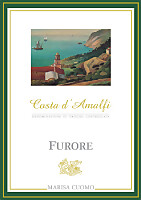
|
|
Costa d'Amalfi Furore Bianco 2023 |
|
| Marisa Cuomo (Campania, Italy) | |
 Falanghina (60%), Biancolella (40%) Falanghina (60%), Biancolella (40%) | |
| Price: € 20.00 | Score: |
 Brilliant straw yellow and nuances of straw yellow, very transparent. Brilliant straw yellow and nuances of straw yellow, very transparent. Intense, clean, pleasing, refined and elegant, starts with hints of
pear, apple and citrus fruits followed by aromas of hawthorn, broom, plum,
peach, pineapple, medlar, hazelnut, almond and mineral. Intense, clean, pleasing, refined and elegant, starts with hints of
pear, apple and citrus fruits followed by aromas of hawthorn, broom, plum,
peach, pineapple, medlar, hazelnut, almond and mineral.
 Crisp attack and however balanced by alcohol, good body, intense
flavors, agreeable. Crisp attack and however balanced by alcohol, good body, intense
flavors, agreeable.
 Persistent finish with flavors of pear, apple and plum. Persistent finish with flavors of pear, apple and plum. 4 months in steel tanks. 4 months in steel tanks. |
|
 Pasta with fish, Sauteed fish, Fried fish, Sauteed white meat, Dairy products Pasta with fish, Sauteed fish, Fried fish, Sauteed white meat, Dairy products |
|
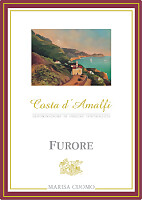
|
|
Costa d'Amalfi Furore Rosso 2023 |
|
| Marisa Cuomo (Campania, Italy) | |
 Aglianico (50%), Piedirosso (50%) Aglianico (50%), Piedirosso (50%) | |
| Price: € 20.00 | Score: |
 Intense ruby red and nuances of ruby red, little transparency. Intense ruby red and nuances of ruby red, little transparency. Intense, clean, pleasing and refined, starts with hints of black
cherry, plum and rose followed by aromas of violet, pomegranate, raspberry,
blueberry, blackberry, carob and vanilla. Intense, clean, pleasing and refined, starts with hints of black
cherry, plum and rose followed by aromas of violet, pomegranate, raspberry,
blueberry, blackberry, carob and vanilla.
 Properly tannic attack and however balanced by alcohol, good body,
intense flavors, agreeable. Properly tannic attack and however balanced by alcohol, good body,
intense flavors, agreeable.
 Persistent finish with flavors of black cherry, plum and pomegranate. Persistent finish with flavors of black cherry, plum and pomegranate. 6 months in barrique. 6 months in barrique. |
|
 Pasta with meat and mushrooms, Stewed meat with mushrooms, Cheese Pasta with meat and mushrooms, Stewed meat with mushrooms, Cheese |
|
|
||||||||
|
DiWineTaste Polls
|
| |||||||
Privacy Policy | |||||||


| Copyright © 2002-2025 Antonello Biancalana, DiWineTaste - All rights reserved |
| All rights reserved under international copyright conventions. No part of this publication and of this WEB site may be
reproduced or utilized in any form or by any means, electronic or mechanical, without permission in writing from DiWineTaste. |